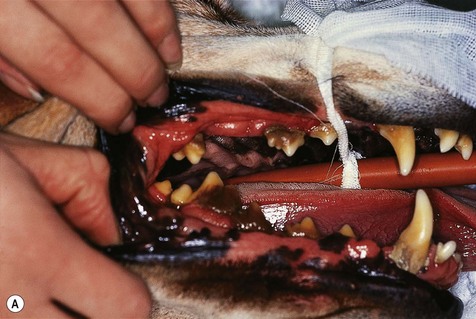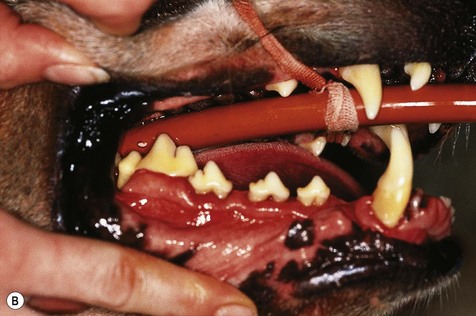Chapter 6 Examination involves assessing not only the oral cavity proper, but also palpation of: • The face (facial bones and zygomatic arch) • Salivary glands (mandibular/sublingual; the parotids are usually only palpable if enlarged) Having looked at the entire face, the mouth is first examined by gently holding the jaws closed and retracting the lips (do not pull on the fur to retract lips) to look at the soft tissues and buccal aspects of the teeth. This is the optimal time to evaluate occlusion. Chapter 5 details the normal occlusal relationships in the dog and cat. A checklist for evaluation of dental occlusion is shown in Box 6.1. The oropharynx should be examined prior to endotracheal intubation. Normal anatomic features of the oral cavity need to be identified and inspected. Refreshing your memory on these features from an anatomy textbook is highly recommended. It is only with knowledge of the normal that abnormalities can be identified. A checklist for the oral examination under anesthetic is summarized in Box 6.2. The following indices and criteria should be evaluated for each tooth: In animals with large accumulations of dental deposits (plaque and calculus) on the teeth, it may be necessary to remove these to assess periodontal status accurately (Fig. 6.1).
Oral examination and recording
Oral examination
Conscious examination
Examination under general anesthesia
Periodontium
![]()
Stay updated, free articles. Join our Telegram channel

Full access? Get Clinical Tree


Oral examination and recording


